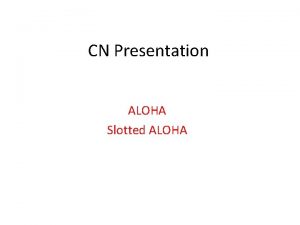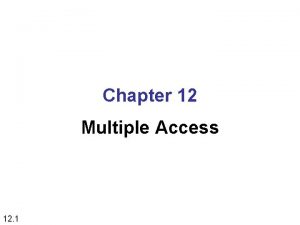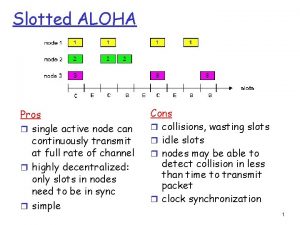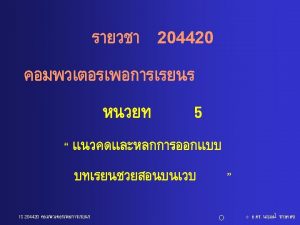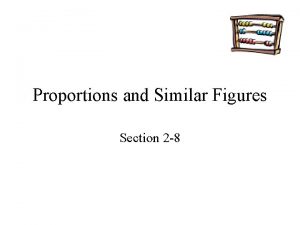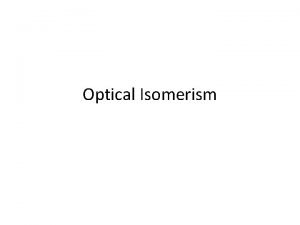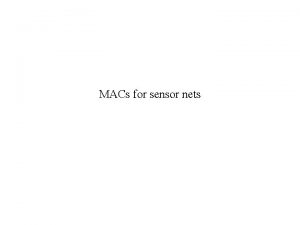Slotted ALOHA Assumptions r all frames same size








- Slides: 8

Slotted ALOHA Assumptions r all frames same size r time is divided into equal size slots, time to transmit 1 frame r nodes start to transmit frames only at beginning of slots r nodes are synchronized r if 2 or more nodes transmit in slot, all nodes detect collision Operation r when node obtains fresh frame, it transmits in next slot r no collision, node can send new frame in next slot r if collision, node retransmits frame in each subsequent slot with probability p until success 5: Data. Link Layer 1

Slotted ALOHA and Efficiency is the long-run fraction of successful slots when there are many nodes, each with many frames to send Pros r single active node can continuously transmit at full rate of channel r highly decentralized: only slots in nodes need to be in sync r simple At best: channel used for useful transmissions 37% of time! Cons r collisions, wasting slots r idle slots r clock synchronization 5: Data. Link Layer 2

Pure (unslotted) ALOHA r unslotted Aloha: simpler, no synchronization r when frame first arrives m transmit immediately r collision probability increases: m frame sent at t 0 collides with other frames sent in [t 0 -1, t 0+1] 5: Data. Link Layer 3

Pure Aloha efficiency P(success by given node) = P(node transmits). P(no other node transmits in [t 0 -1, t 0]. P(no other node transmits in [t 0, t 0+1] = p. (1 -p)N-1 = p. (1 -p)2(N-1) … choosing optimum p and then letting n -> infty. . . = 1/(2 e) = 18% Even worse ! 5: Data. Link Layer 4

CSMA (Carrier Sense Multiple Access) listen before transmit CSMA collisions spatial layout of nodes collisions can still occur: propagation delay means two nodes may not hear each other’s transmission collision: entire packet transmission time wasted note: role of distance & propagation delay in determining collision probability 5: Data. Link Layer 5

CSMA/CD (Collision Detection) r collisions detected within short time r colliding transmissions aborted, reducing channel wastage r collision detection: m easy in wired LANs: measure signal strengths, compare transmitted, received signals m difficult in wireless LANs: receiver shut off while transmitting (無線網路 只能傳 送或接收) 5: Data. Link Layer 6

“Taking Turns” MAC protocols channel partitioning MAC protocols: m efficiently and fairly at high load m inefficient at low load Random access MAC protocols m efficient at low load m high load: collision overhead “taking turns” protocols look for best of both worlds! 5: Data. Link Layer 7

“Taking Turns” MAC protocols Token passing: Polling: r control token passed from r master node one node to next “invites” slave nodes sequentially. to transmit in turn r token message r concerns: m polling overhead m m latency master failure m m m token overhead latency Token failure 5: Data. Link Layer 8
